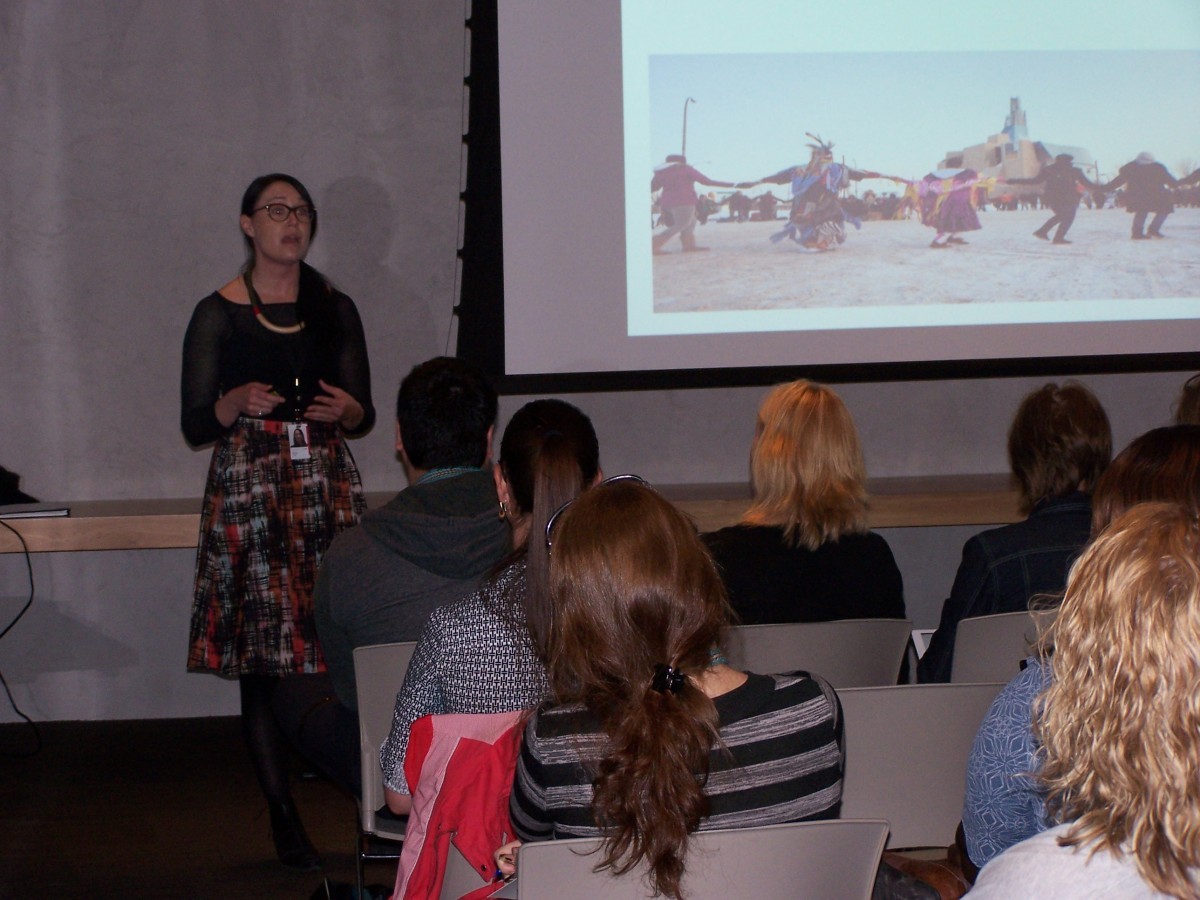
Emily Grafton, researcher-curator at the museum and a PhD candidate at U of M, spoke to students about the museum's decolonizing approach.
Canadian Museum for Human Rights strives to incorporate current Aboriginal perspectives, students told
Lecture from CMHR curator gave students taking summer institute on human rights insight into decisions on galleries
Creating a museum that is sensitive to the truths about Indigenous experiences is a challenge that the Canadian Museum for Human Rights (CMHR) has tried to face head-on, the institution’s Emily Grafton told students during a lecture at this year’s summer institute on human rights education.
Grafton, a PhD candidate in native studies at the U of M and the museum’s researcher/curator in Indigenous content, spoke on “Indigenous Rights at the CMHR” on the second day of the 10-day institute, held in July.
Historically, Grafton told the 37 students enrolled in this year’s institute, “museums don’t treat aboriginals very well.” She noted that portrayal of Indigenous peoples in museums is often “near pre-historic North America.”
“It ends at the beginning of the gallery—giving the impression that Indigenous people ceased to exist.”
One of the CMHR’s goals is to try to undo some of those stereotypes, said Grafton, mentioning Trace by Rebecca Belmore, a ceramic ceremonial blanket made of thousands of hand-made beads of Manitoba clay, located in the museum’s Indigenous Perspectives gallery, which, in the artist’s words, are “acknowledging the long history of people using this place—long before treaties and long before our contemporary life.”
She noted that the CMHR’s approach is one of decolonization. Part of that approach means the museum follows certain guidelines, such as not collecting anything that is sacred including sacred drums or pipes.
Grafton also spoke to the students about the Indigenous voices exhibit in which curators had to choose voices and worldviews that were important. In the Canadian gallery, she said, there are 70 stories and about 20 per cent of those have Indigenous content.
Challenges
The CMHR strives to keep its Aboriginal information constantly updated, Grafton said. Of its 11 galleries, nine are core galleries but two are temporary, meaning curators can add new information.
“They are always growing and changing,” said Grafton. The curators seek ways of incorporating topical, but difficult, information such as the issue of murdered and missing Indigenous women and the Truth and Reconciliation Report, in which the residential school system was called a “cultural genocide.”
“This is one of the most important things our museum and nation is facing right now—being truthful about our cultural genocide,” noted Grafton. She said she feels the CMHR has done a good job of tackling current issues.
But she noted that “our museum is not chronological,” which means that some visitors get confused or upset.
Instead, the museum is set up thematically, which means issues like women’s rights or the environment are woven through the galleries, she said.
In terms of the galleries, Grafton told the students that there are constant changes and that updating them is a process that is still developing.
“We have learned a lot from the challenges. We are hoping that helps us further develop our aboriginal perspectives.”
Students enjoy behind-the-scenes perspectives
Jon Sorokowski, a Grade 5 teacher at École Robert Browning, said that he was interested in learning about why certain world events or issues were included or excluded in the exhibits, for example.
“It’s [this type of course is] different because we get to go behind the scenes—what’s the methodology behind the museum as well as the challenges.”
Josee Trudeau, a Grade 7 teacher from College Beliveau, said that while she felt she gained more from the in-depth lectures at the Faculty of Education, she enjoyed seeing the exhibits from the curators’ eyes.
“It’s been interesting…it’s very neat to go off site and explore the museum.”






